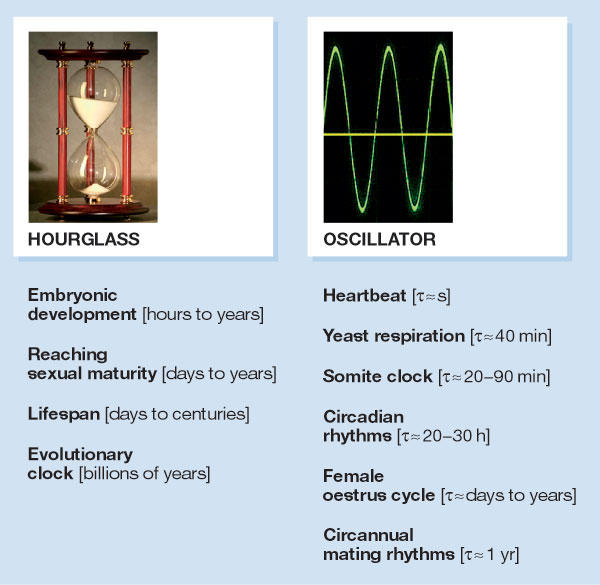Figure 1.

Two types of biological clock. Biological clocks that determine the duration of unique events for an organism or populations of organisms are termed hourglass timers. Examples of such processes are indicated below the hourglass. Oscillators are designed to drive reiterative processes, of which a few examples are listed below the picture. Yeast respiration is controlled by an oscillator that generates 40-min cycles in oxygen consumption. This oscillator also governs global gene transcription and gates DNA replication to a particular time window in the cycle. Somite clocks govern the timing of segmentation during vertebrate embryogenesis. Heartbeat rhythms, yeast respiration cycles and somite deposition rhythms are controlled by ultradian clocks (period length shorter than 20 h), whereas oestrus cycles and circannual mating rhythms are driven by infradian clocks (period length longer than 30 h; Gachon et al, 2004b).
